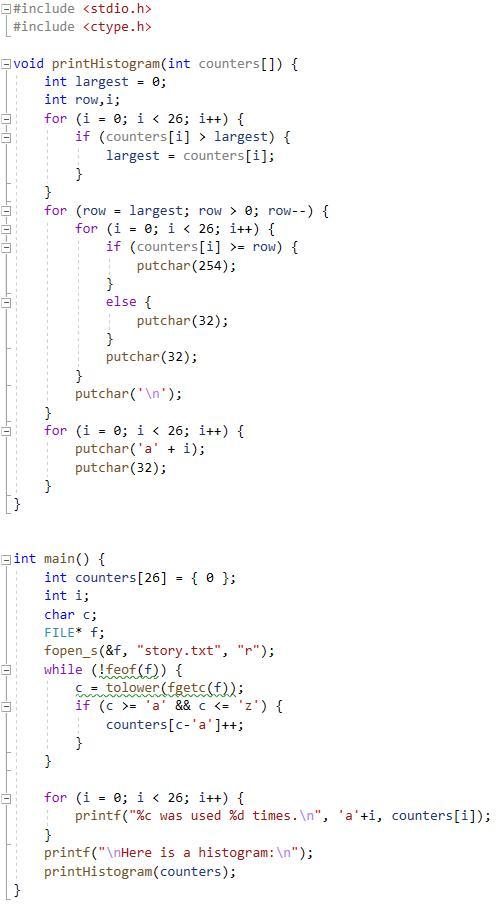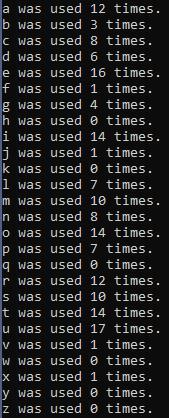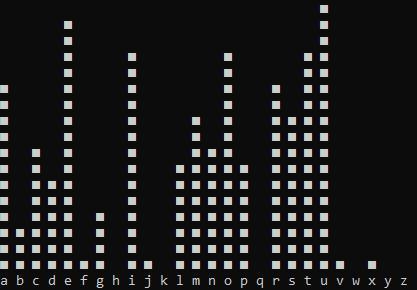In c please
Counting the character occurrences in a file
For this task you are asked to write a program that will open a file called “story.txt
and count the number of occurrences of each letter from the alphabet in this file.
At the end your program will output the following report:
Number of occurrences for the alphabets:
a was used-times.
b was used - times.
c was used - times .... ...and so, on
Assume the file contains only lower-case letters and for simplicity just a single
paragraph. Your program should keep a counter associated with each letter of the
alphabet (26 counters) [Hint: Use array|
| Your program should also print a histogram of characters count by adding
a new function print Histogram (int counters []). This function receives the
counters from the previous task and instead of printing the number of times each
character was used, prints a histogram of the counters. An example histogram for
three letters is shown below) [Hint: Use the extended asci character 254]:
Answers
Answer:
#include <stdio.h>
#include <ctype.h>
void printHistogram(int counters[]) {
int largest = 0;
int row,i;
for (i = 0; i < 26; i++) {
if (counters[i] > largest) {
largest = counters[i];
}
}
for (row = largest; row > 0; row--) {
for (i = 0; i < 26; i++) {
if (counters[i] >= row) {
putchar(254);
}
else {
putchar(32);
}
putchar(32);
}
putchar('\n');
}
for (i = 0; i < 26; i++) {
putchar('a' + i);
putchar(32);
}
}
int main() {
int counters[26] = { 0 };
int i;
char c;
FILE* f;
fopen_s(&f, "story.txt", "r");
while (!feof(f)) {
c = tolower(fgetc(f));
if (c >= 'a' && c <= 'z') {
counters[c-'a']++;
}
}
for (i = 0; i < 26; i++) {
printf("%c was used %d times.\n", 'a'+i, counters[i]);
}
printf("\nHere is a histogram:\n");
printHistogram(counters);
}




Related Questions
Why is it important to isolate evidence-containing devices from the internet?
To save the battery
To hide their location
Devices can be remotely locked or wiped if connected
It is not important to isolate the devices
Answers
Answer:
C.
Devices can be remotely locked or wiped if connected
Explanation: